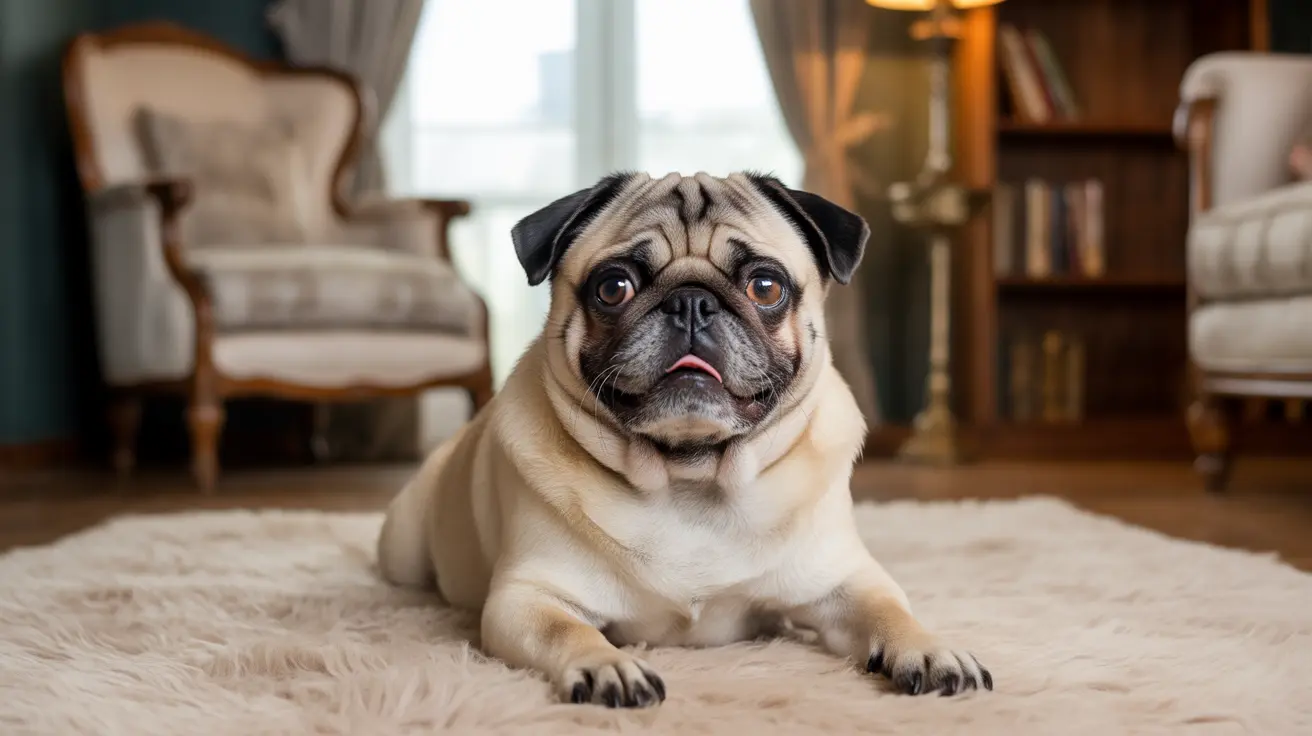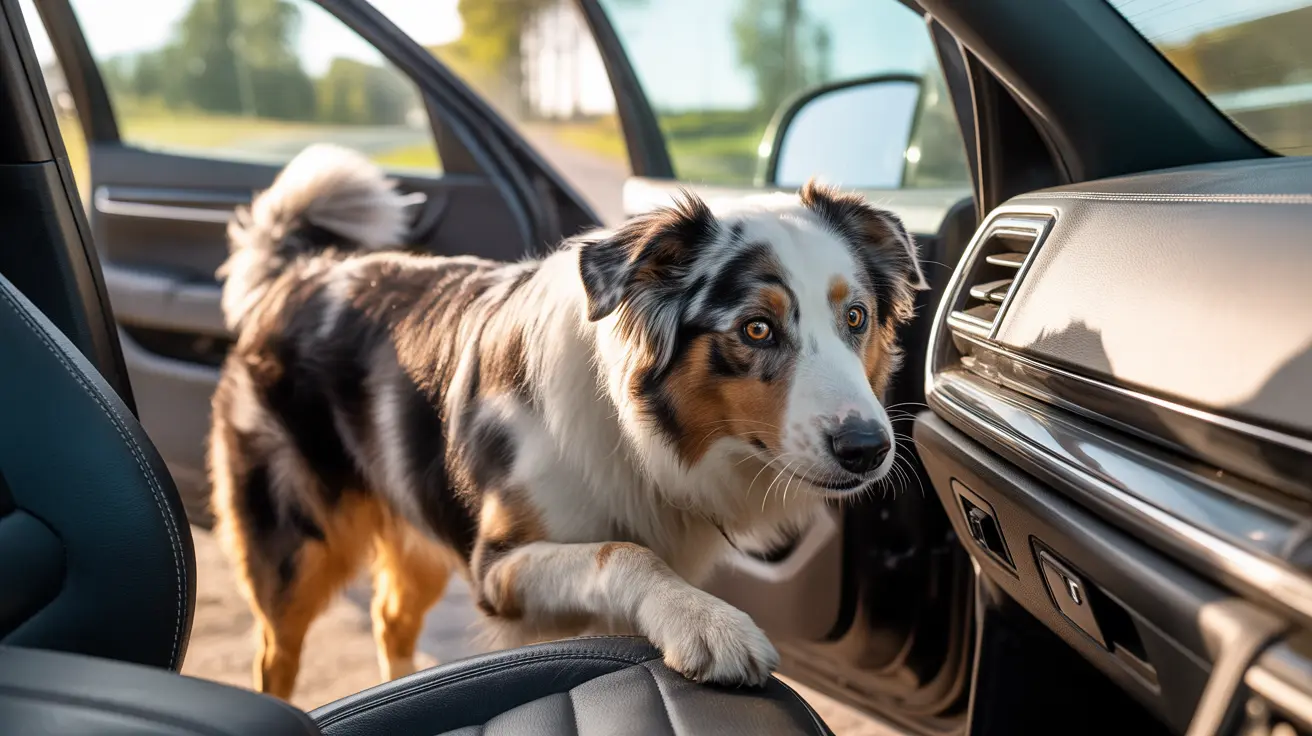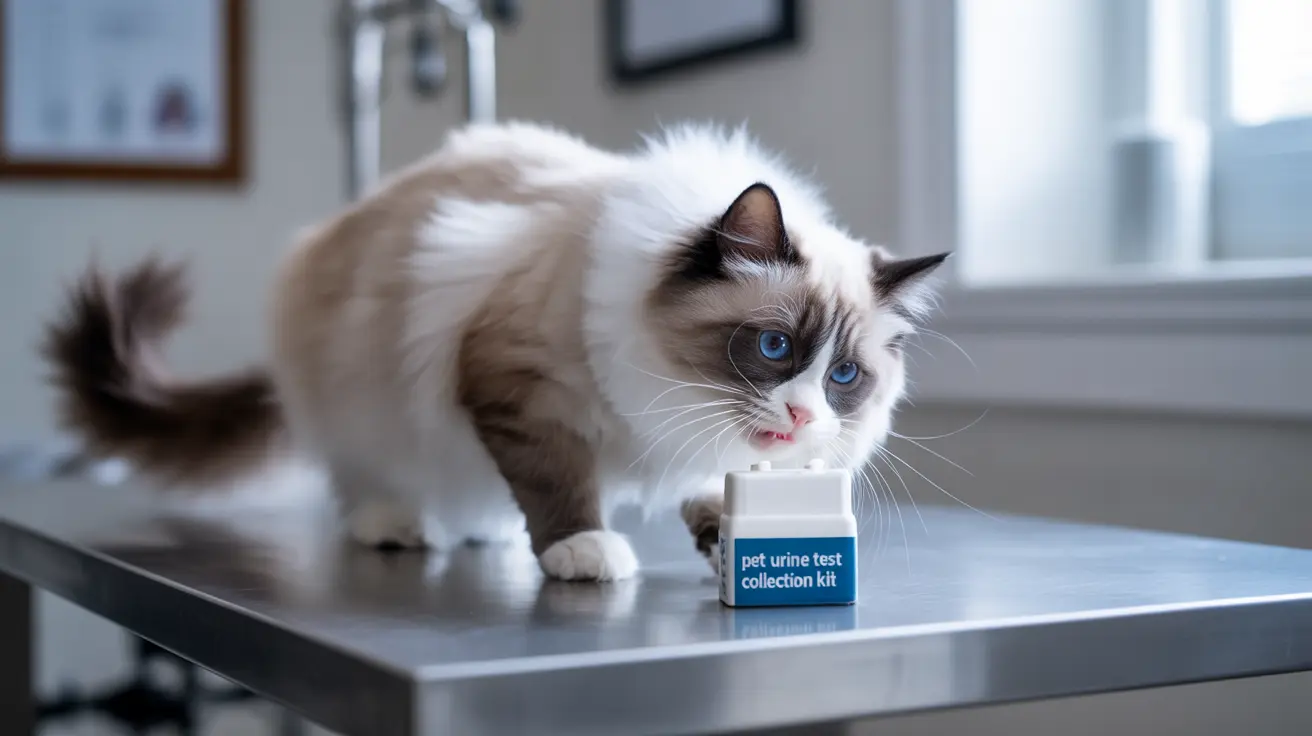Dog Hiccups Causes and Remedies: Understanding When to Worry and How to Help Your Pet
Every dog owner has likely witnessed their furry companion experiencing hiccups at some point. These sudden, rhythmic sounds can be amusing, concerning, or both, depending on their frequency and duration. Dog hiccups are surprisingly common and usually harmless occurrences that result from involuntary spasms of the diaphragm. Understanding the underlying causes, recognizing when hiccups might signal something more serious, and knowing effective remedies can help you provide the best care for your pet while maintaining peace of mind.
While most dog hiccups resolve naturally within minutes, certain situations require veterinary attention. This comprehensive guide will explore everything you need to know about dog hiccups causes and remedies, from the basic anatomy involved to practical prevention strategies. Whether you're dealing with a hiccup-prone puppy or want to understand when persistent hiccups warrant professional evaluation, this article provides the essential information every responsible dog owner should have.
Understanding the Anatomy Behind Dog Hiccups
To comprehend why dogs experience hiccups, it's essential to understand the role of the diaphragm in their respiratory system. The diaphragm is a crucial muscle that separates the chest cavity from the abdomen and plays a vital role in breathing. When functioning normally, this muscle contracts and relaxes rhythmically to help draw air into and expel air from the lungs.
Dog hiccups occur when the diaphragm experiences involuntary spasms, causing a sudden intake of air followed by the rapid closure of the vocal cords. This sequence produces the characteristic "hic" sound that we recognize as hiccups. The process is essentially the same in dogs as it is in humans, though dogs may experience hiccups more frequently due to their different eating habits and higher activity levels.
Certain breeds are more susceptible to hiccups due to their anatomical structure. Brachycephalic breeds such as Pugs, Bulldogs, and Boxers are particularly prone to hiccups because their compressed airways can constrain normal breathing patterns. Additionally, puppies experience hiccups more frequently than adult dogs because their diaphragm muscles are less developed and they tend to have higher energy levels that can trigger spasms.
Common Harmless Causes of Dog Hiccups
The majority of dog hiccups stem from everyday activities and behaviors that are completely normal but can trigger diaphragm spasms. Understanding these common causes can help you identify patterns in your dog's hiccup episodes and take preventive measures when possible.
Rapid Eating and Drinking
One of the most frequent triggers for dog hiccups is eating or drinking too quickly. When dogs consume food or water rapidly, they tend to swallow excess air along with their meal. This air intake can cause the diaphragm to spasm, resulting in hiccups. Dogs who are particularly food-motivated or those who feel they need to compete for resources often eat at an accelerated pace, making them more susceptible to post-meal hiccups.
Excitement and Stress
Emotional states significantly impact a dog's breathing patterns and can trigger hiccups. High levels of excitement, whether from playtime, visitors, or anticipation of walks, can cause hyperventilation and irregular breathing that leads to diaphragm spasms. Similarly, stress from changes in routine, loud noises, or new environments can affect breathing patterns and contribute to hiccup episodes.
Physical Activity and Temperature Changes
Vigorous play sessions, rough activity, and heavy breathing following exercise can all trigger hiccups in dogs. The rapid changes in breathing patterns during and after intense physical activity can cause the diaphragm to spasm. Additionally, sudden exposure to cold temperatures or significant temperature changes can affect breathing and potentially trigger hiccups.
Serious Health Conditions Associated with Dog Hiccups
While most dog hiccups are benign, persistent or frequent episodes may indicate underlying health issues that require veterinary evaluation. Recognizing the signs that differentiate harmless hiccups from potentially serious conditions is crucial for your dog's health and well-being.
Respiratory and Gastrointestinal Issues
Several medical conditions can manifest with hiccups as a symptom. Respiratory infections such as kennel cough or asthma can irritate the diaphragm and cause persistent hiccups. Pneumonia, heart disease, and gastrointestinal problems including acid reflux can also trigger frequent hiccup episodes. These conditions often present with additional symptoms that help distinguish them from simple, harmless hiccups.
Neurological and Inflammatory Conditions
More serious underlying causes include hiatal hernia, pancreatitis, phrenic nerve inflammation, and brain or meninges inflammation. These conditions can affect the normal functioning of the diaphragm and its nerve supply, leading to persistent hiccups. In rare cases, poisoning can also cause prolonged hiccup episodes along with other concerning symptoms.
Warning signs that accompany hiccups and indicate the need for immediate veterinary attention include drooling, vomiting, coughing, wheezing, loss of appetite, lethargy, and difficulty swallowing. If hiccups persist for more than an hour or occur frequently over several days, professional evaluation is warranted to rule out underlying medical conditions.
Effective Home Remedies and Calming Techniques
When your dog experiences normal, harmless hiccups, several gentle techniques can help alleviate the spasms and provide relief. These methods focus on calming the dog and normalizing breathing patterns without causing additional stress.
Gentle Physical Interventions
Simple distraction techniques such as cuddling, gentle belly rubs, or soft massages can help relax your dog and potentially ease diaphragm spasms. These calming physical interactions not only provide comfort but can also help regulate breathing patterns. If your dog is actively eating or drinking when hiccups begin, temporarily removing food and water bowls may prevent further air swallowing that could perpetuate the episode.
Breathing and Movement Techniques
Encouraging calm, controlled breathing through short, leisurely walks can help normalize diaphragm function. The gentle exercise and change of environment can serve as a natural distraction while promoting regular breathing patterns. However, avoid vigorous activity during hiccup episodes, as this may exacerbate the spasms.
It's important to avoid trying to frighten or startle your dog to stop hiccups, as this technique sometimes used with humans can increase stress in dogs and potentially worsen the condition. Instead, focus on creating a calm, supportive environment that allows the hiccups to resolve naturally.
Prevention Strategies for Dog Hiccups
Implementing preventive measures can significantly reduce the frequency of hiccup episodes in your dog. These strategies primarily focus on managing eating habits, environmental factors, and stress levels that commonly trigger diaphragm spasms.
Feeding Management Techniques
Using slow-feed bowls, puzzle feeders, or snuffle mats can effectively prevent the rapid eating that often triggers hiccups. These tools encourage dogs to eat at a more measured pace, reducing air intake and the likelihood of diaphragm spasms. Offering smaller meal portions more frequently throughout the day, rather than one or two large meals, can also help minimize hiccup-inducing overeating.
Ensuring gradual transitions when changing your dog's diet and maintaining consistent feeding schedules can help prevent digestive upset that might contribute to hiccups. Providing fresh water in appropriate quantities and monitoring your dog's drinking speed, especially after exercise, can further reduce hiccup frequency.
Environmental and Lifestyle Considerations
Maintaining a calm environment during and after meals can significantly reduce stress-induced hiccups. This includes minimizing distractions, loud noises, and competitive situations during feeding times. Protecting dogs from sudden temperature changes and ensuring they have adequate rest periods after vigorous play can also help prevent hiccup episodes.
For dogs prone to excitement-induced hiccups, establishing consistent routines and using calming techniques during potentially stimulating situations can be beneficial. This might include practicing relaxation commands or providing a quiet space where your dog can decompress after exciting events.
When to Seek Veterinary Care
While most dog hiccups are harmless and resolve on their own, certain situations require professional veterinary evaluation. Understanding when to seek help ensures that potentially serious underlying conditions are identified and treated promptly.
Immediate veterinary attention is warranted if hiccups persist for more than an hour, occur frequently over several days, or are accompanied by concerning symptoms such as vomiting, difficulty breathing, loss of appetite, lethargy, or changes in behavior. These signs may indicate underlying respiratory, gastrointestinal, or neurological conditions that require professional diagnosis and treatment.
Regular veterinary check-ups are particularly important for breeds prone to hiccups, young puppies, and senior dogs. These routine examinations can help identify potential health issues before they become serious problems and ensure your dog maintains optimal health throughout their life.
Frequently Asked Questions
Are hiccups more common in puppies than adult dogs?
Yes, puppies experience hiccups more frequently than adult dogs. This increased susceptibility occurs because puppies have less developed diaphragm muscles and higher energy levels. Their immature respiratory systems and tendency to eat quickly or get overly excited make them more prone to the diaphragm spasms that cause hiccups. Most puppies outgrow frequent hiccups as they mature and their muscles develop.
How long do normal dog hiccups typically last?
Normal, harmless dog hiccups usually resolve within minutes without any intervention. Most episodes last anywhere from a few seconds to several minutes. If hiccups persist for more than an hour or occur repeatedly throughout the day, this may indicate an underlying health issue that requires veterinary evaluation.
Can certain dog breeds experience hiccups more often than others?
Yes, brachycephalic breeds such as Pugs, Bulldogs, and Boxers are more susceptible to hiccups due to their compressed airway anatomy that can constrain normal breathing patterns. These breeds' shortened snouts and narrowed airways make them more prone to breathing irregularities that can trigger diaphragm spasms and subsequent hiccups.
Is it safe to give my dog water during a hiccup episode?
You should temporarily remove water bowls if your dog is actively drinking during hiccups, as continued rapid drinking can worsen the episode by causing more air swallowing. However, once the hiccups subside, offering small sips of fresh water can be helpful. The key is to prevent additional air intake that might perpetuate the diaphragm spasms.
What should I avoid doing when my dog has hiccups?
Avoid trying to startle or frighten your dog to stop hiccups, as this can increase stress and potentially worsen the condition. Also avoid giving food or treats during active hiccup episodes, as this may cause additional air swallowing. Instead, focus on providing gentle comfort and creating a calm environment for your pet.
Can stress-related hiccups in dogs be prevented?
Yes, stress-related hiccups can often be prevented by maintaining consistent routines, creating calm environments during meals, and using relaxation techniques during potentially exciting or stressful situations. Identifying your dog's specific stress triggers and managing those situations proactively can significantly reduce hiccup frequency.
When should I be concerned about my dog's hiccups?
Seek veterinary attention if hiccups last more than an hour, occur frequently over several days, or are accompanied by symptoms such as drooling, vomiting, coughing, wheezing, loss of appetite, lethargy, or difficulty swallowing. These signs may indicate underlying medical conditions that require professional evaluation and treatment.
Conclusion
Understanding dog hiccups causes and remedies empowers you to provide appropriate care for your pet while recognizing when professional help is needed. Most hiccup episodes are harmless results of normal behaviors like rapid eating, excitement, or physical activity, and they typically resolve on their own within minutes. Simple prevention strategies such as using slow-feed bowls, maintaining calm feeding environments, and managing stress can significantly reduce hiccup frequency in most dogs.
However, persistent or frequent hiccups, especially when accompanied by other symptoms, may indicate underlying health conditions requiring veterinary attention. By monitoring your dog's hiccup patterns, implementing preventive measures, and knowing when to seek professional care, you can ensure your furry companion remains healthy and comfortable. Remember that regular veterinary check-ups are essential for maintaining your dog's overall health and catching potential issues early, particularly for breeds prone to respiratory challenges or young puppies still developing their systems.






